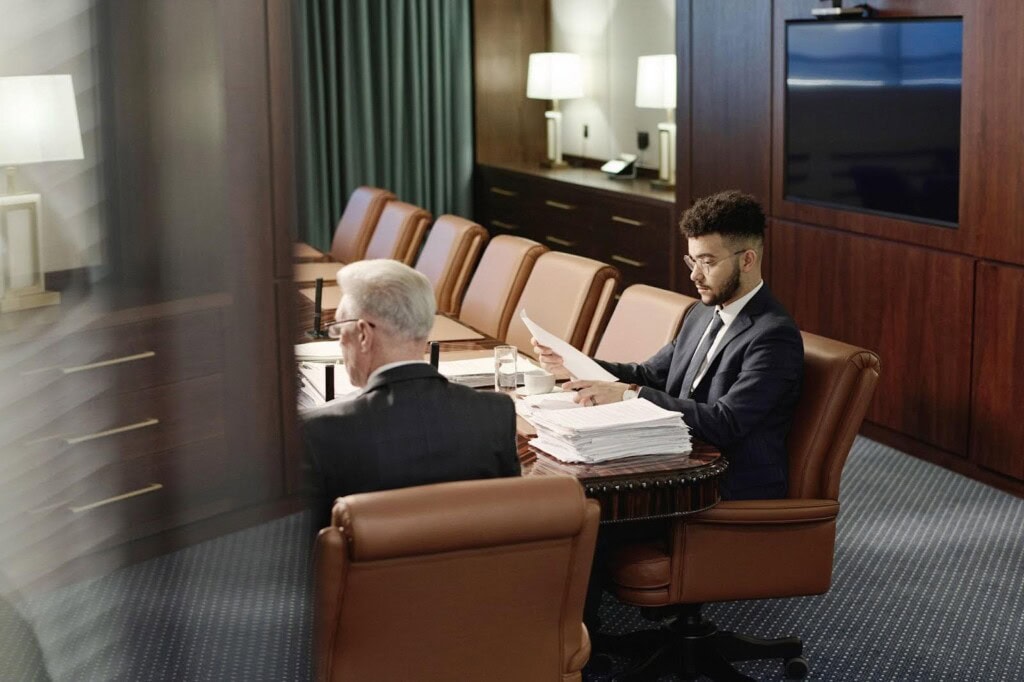Evidence is at the center of any legal case, which makes the presentation of evidence in court a crucial task. Not only is it essential that the evidence adhere to the legal requirements, but the evidence presentation must be clear, relevant and, in order to serve your clients properly, engaging and persuasive. This article will outline the necessary, practical steps presenting evidence in court, and it explains why the principles of clarity, relevance, and adherence to legal procedures are vital to any courtroom presentation.

If these three principles of clarity, relevance, and legal justification are not clearly demonstrated in the case presentation, then parts or much of the evidence will likely be thrown out. In other words, if the evidence is not relevant to the case, then the opposing legal counsel will object, and the judge will sustain the objection. Therefore, the relevance of evidence should be clearly demonstrated in the initial collection of various exhibits (evidence).
Presenting evidence is done at the deposition stage. This is when questions are posed to witnesses whose testimony is taken under what is known as the discovery stage. This is a preliminary stage during which each side of the case seeks to determine the facts o f the opposing parties or to accumulate testimony that could be used in trial directly.
Trial attorney Stephen P. Haber has decades of experience presenting evidence in court and he explains that often key witness’ testimony is taken on video and projected at trial subject to objection rulings by the Court. A timeline software like the Case Crafter solution is valuable in conducting such depositions, either by presenting online or in the physical court room.
Before the evidence is evaluated by the judge, it is essential that legal counsel conducts their own evaluation. Firstly, what is the picture I want to paint, in what form that is most compelling and effective, and what admissible evidence is available? For it to be used in court, the evidence must be:
In addition to ensuring that the evidence relates directly to the case (relevance), consideration must be given to which evidence is needed in the presentation. An important question to ask is, «What is necessary to prove your position?». When reviewing the evidence and answering this question, one should also consider the most reliable evidence. The key factor is that the information should be considered as trustworthy by both the opposing party and the judge.
Next, it is time to gather the appropriate evidence, which can take time depending on the complexity of the case and the variety of evidence needed to make a compelling case.
Are the exhibits physically attainable, like a printout or device in proper form, or are they digitally presented? This impacts the ability to present them and the practicalities of how this is done. Consider if copies need to be prepared ahead of time or if there are other materials that are needed in order to present the evidence.
Consider how to present the evidence, and importantly, in which order. It is important to make a coherent presentation, for which one should consider the following factors:
You must also prepare an opening statement, which should outline your general legal position. This might include a reference to the evidence you are planning to use and present, but should not be used to present your evidence (testimonies or exhibits). After both parties have provided their opening arguments, it is time to present the evidence. It is important to note that should you go too much into detail about a specific piece of evidence, the opposing lawyer might argue that you have already presented said evidence in your opening statement.
Evidence can be divided into two main categories; testimonies, which cover all the statements made by relevant parties in the case, and exhibits, which cover all documents and media that are important to the case.
Testimonies are, for example, witness statements, statements from the police officers, or statements from the suspect. In other words, they are accounts made by people who are in some way involved in the case.

Exhibits cover all other evidence outside of testimonies. Roughly, they can be divided into further subcategories:
As outlined above, there are several different types of exhibits that might be used in a courtroom. This requires specific methods – and often some tools – to ensure a precise and structured manner of presentation.
Firstly, each exhibit, whether it be photos or documents, are marked with letters or numbers (e.g., Exhibit A or Exhibit 1). This makes it easier for each counsel to reference the evidence and for the judge or jury to follow along with the presentation.
Additionally, one can make use of trial presentation tools, such as a legal timeline software. Software like this streamlines the presentation process and structures all the relevant information on a timeline, while offering presentation modes for simultaneous live presentation of the argument and evidence on the timeline.
Finally, a crucial part of presenting exhibits is the demonstrated and proven authenticity of the photos, text exchanges, or documents. For instance, a social media post or text message chain must be dated and captured in a screenshot, in addition to being printed before it is presented to the judge.
Trial attorney Stephen P. Haber is considered one of the pioneers in digital trial presentation of cases in New York State. He explains that the most important element for a clear and convincing evidence presentation is the correct digital tool.
– A legal timeline software, like the Case Crafter solution, enables an easy and compelling presentation of evidence, continues Haber.
A legal timeline software, such as the one Case Crafter offers, provides an instant display of evidence on a compelling timeline, which is easily presented to the judge and jury. This works seamlessly with iPads and desktop computers, making it easy to control the evidence presentation while in court.
– The Case Crafter software is designed for trial lawyers in mind, enabling us to structure and present arguments clearly and rapidly, concludes Haber.
Additionally, any digital tool used in court cases should be secure and confidential, as it manages critical evidence that must be protected to ensure case integrity throughout the process. In the Case Crafter software, all data is encrypted and protected.
The opposing counsel can challenge the evidence and object that it will be used in the courtroom. The objection made by the opposite lawyer will either be sustained – accepted – or overruled – rejected – by the judge. In other words, if the judge sustains the lawyer’s objection during the evidence presentation, that specific piece of evidence is excluded from the case.
There is no exaggeration to say that the presentation of evidence can make or break a case. The evidence must be relevant to the case and function as it is intended; to prove that the suspected crime has been committed by the subject in question. For which it is crucial that its authenticity and trustworthiness is demonstrated in the case presentation. When preparing to present evidence in court, it is crucial to evaluate the evidence and structure it in a compelling and intuitive way. A way of ensuring this is to make use of legal presentation tools like a timeline maker and present the evidence in accordance with legal principles in question.